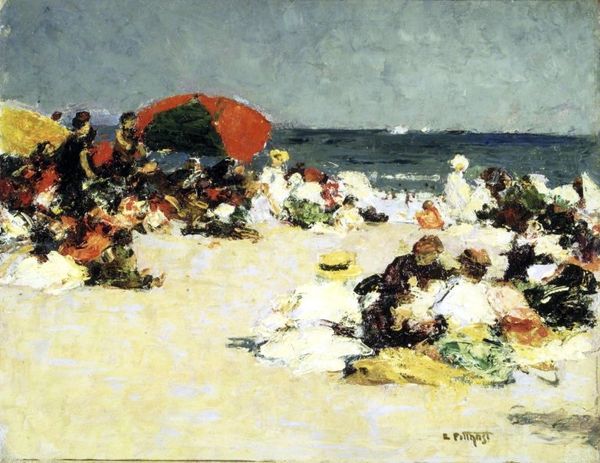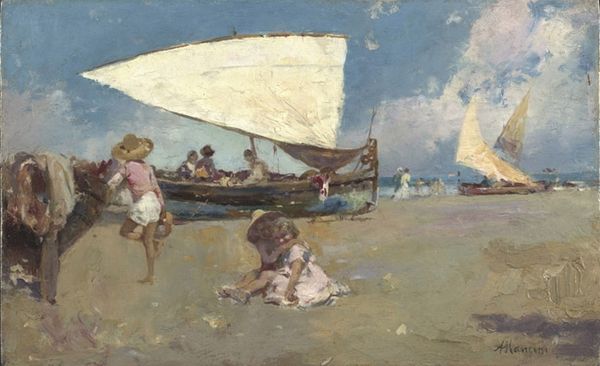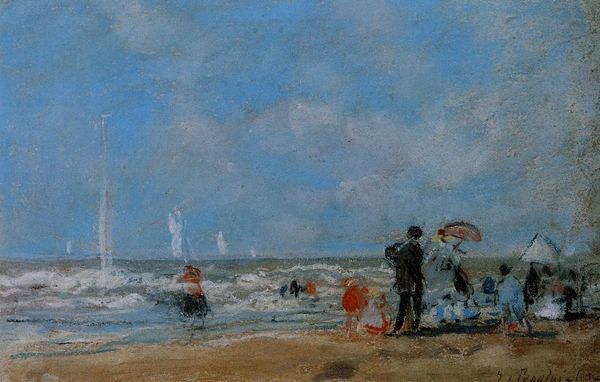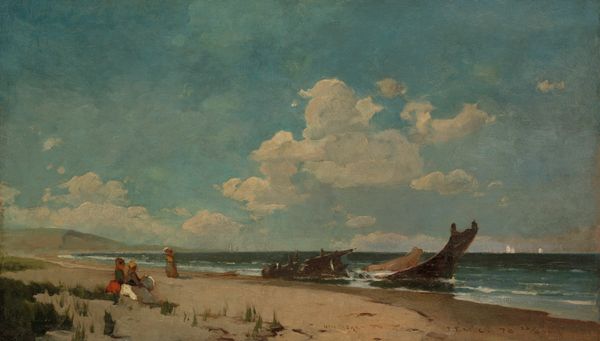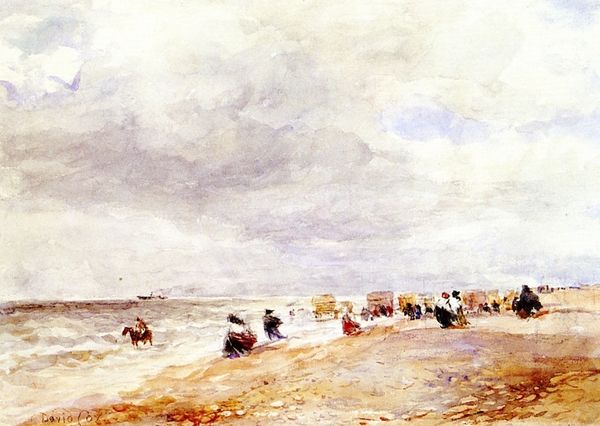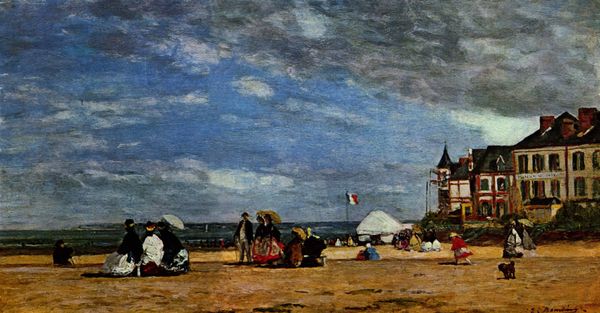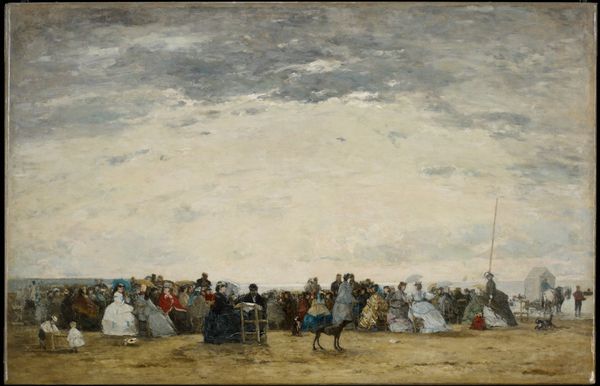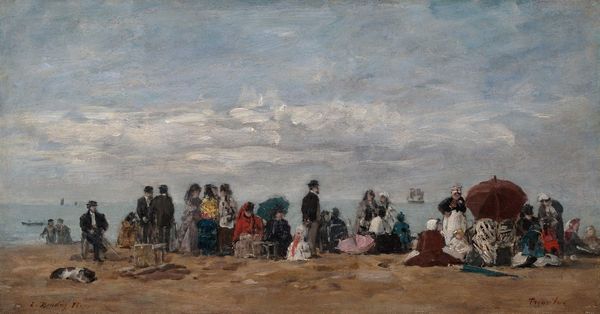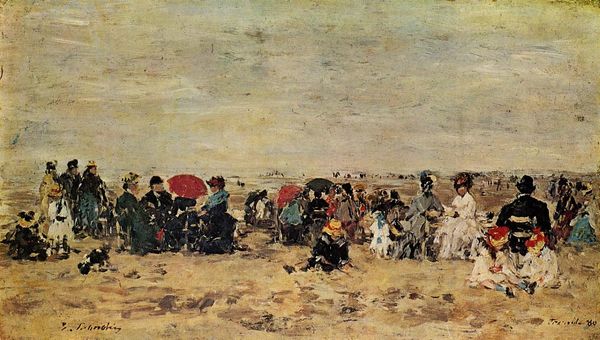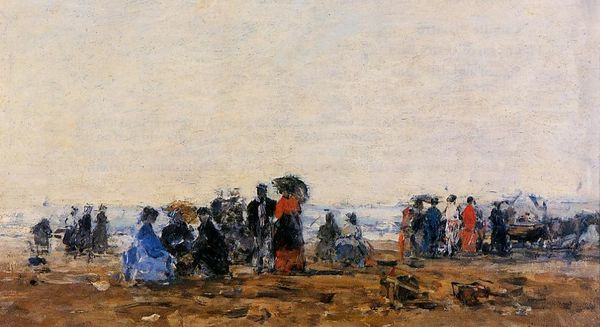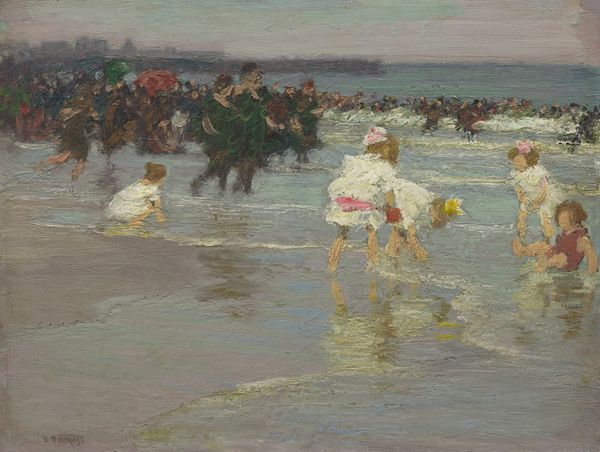
Copyright: Public domain
Curator: Standing before us is "A Summer Afternoon," painted in 1910 by Edward Henry Potthast. Notice the artist's use of oil on canvas to capture this vibrant beach scene. What strikes you initially about it? Editor: Well, immediately, it’s the diffusion of light that captivates me. There's a dreamlike quality to the way the figures seem almost to blend into the sand, everything rendered through flickering brushstrokes. It reminds me of halcyon days and fleeting moments of leisure. Curator: Indeed. Potthast was deeply entrenched in Impressionism, known for capturing everyday life, particularly focusing on children at play, against burgeoning urban and recreational spaces. How do you interpret the multitude of parasols dotting the beach? Editor: The parasols certainly stand out as cultural markers. In a purely symbolic sense, they serve to soften the stark sunlight—but in doing so, they also suggest a level of societal formality, maybe a veiled reference to status and the display of wealth during this period. People wanted to be outside but also still be protected from the elements while still adhering to specific class structures. Curator: Fascinating point. Considering the historical context, with urbanization rapidly changing societal norms, the beach was increasingly becoming a space of both leisure and a performance of social identity. Note also, Potthast's frequent depictions of leisure activities provide critical insights into the evolving role of women and children in public spaces during the early 20th century. The arrangement of figures suggests both collective joy and underlying constraints placed on behavior and visibility. Editor: Absolutely. If you analyze it from the point of view of, let’s say, the visual lexicon, each element holds weight. The way the clusters of people create a visual tapestry evokes ancient frescos depicting pastoral scenes. There is an echo of Arcadia, where even ordinary leisure carries the weight of tradition and idealized harmony, all the while acting as a direct record of how folks are spending their new-found leisure time. Curator: A powerful interpretation. Seeing through that lens helps us recognize the broader implications of seemingly simple genre scenes in revealing socio-historical tensions of the time. Potthast shows us more than just a nice day at the beach. Editor: Yes, I agree, recognizing symbols and context enhances our appreciation of these works—revealing nuances that invite further introspection and, hopefully, richer dialogue around the dynamics of recreation and representation.
Comments
No comments
Be the first to comment and join the conversation on the ultimate creative platform.
